Vinehealth Australia’s Vineyard Register is used each year to provide a snapshot of South Australian industry insights. The following information has been extracted from the 2024 SA Wine Grape Crush Survey and the 2024 Vinehealth Australia Annual Report.
Number of registered vineyard owners in South Australia
The number of registered vineyard owners has continued to decline with a decrease of 51 registered owners from 2022-23 to 2023-24 with 3,183 owners. This has had a commensurate decrease in planted vineyard area of nearly 740 hectares over the same period.
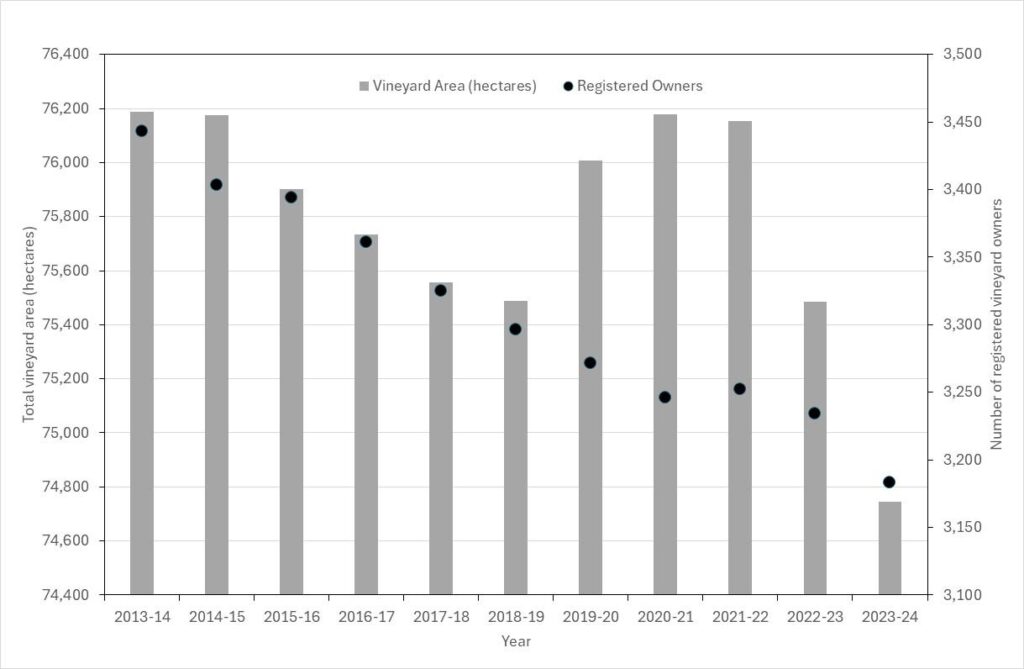
SA registered vineyard owners have now decreased to the lowest number since 2002 after peaking in 2008, and the vineyard area has decreased to before 2006 levels after also peaking in 2008.
Vineyard sizes in South Australia
Large vineyards (100 hectares or more) account for 43% of the planted area in South Australia and they are owned by a small number (4%) of registered vineyard owners. Conversely, there are 1,908 registered vineyard owners (58% of owners) holding less than 10 hectares, accounting for only 11% of the total planted area in South Australia.
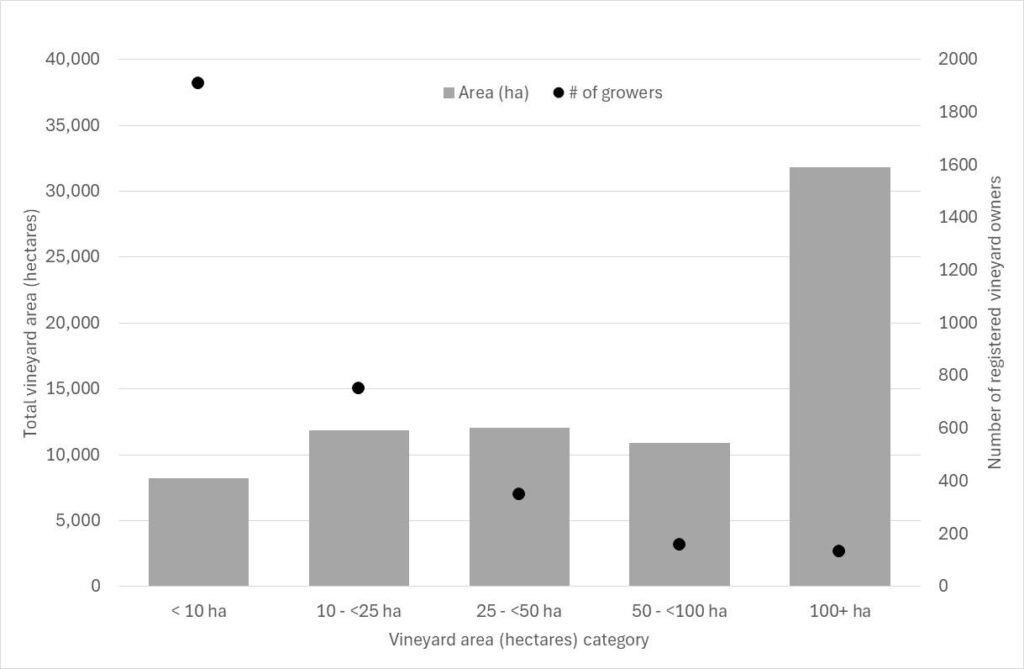
If we compare the 2022/23 data with the 2023/24 data:
- All vineyard area categories have decreased in planted area from 2022-23 to 2023-24 except the 25 to <50 hectare category which has seen an increase of 416 hectares with the largest decrease in the 10 to <25 hectare category with a decrease of 564 hectares.
- Only three of the five categories have decreased in number of growers with the 25 to <50 hectares and 100+ hectares seeing small increases of 10 and 4 growers respectively. The 10 to <25 hectare category has seen the largest decrease with 34 growers.
Grape varieties in South Australia
South Australia continues to be dominated by two major red varieties, Shiraz and Cabernet Sauvignon, totalling 60.7% of the planted area. Three of the top five varieties are red (Shiraz, Cabernet Sauvignon and Merlot). Chardonnay continues to be the major white variety at 10.7% of the planted area in South Australia, with Sauvignon Blanc (3.1%) overtaking Riesling and rounding out the top five varieties.
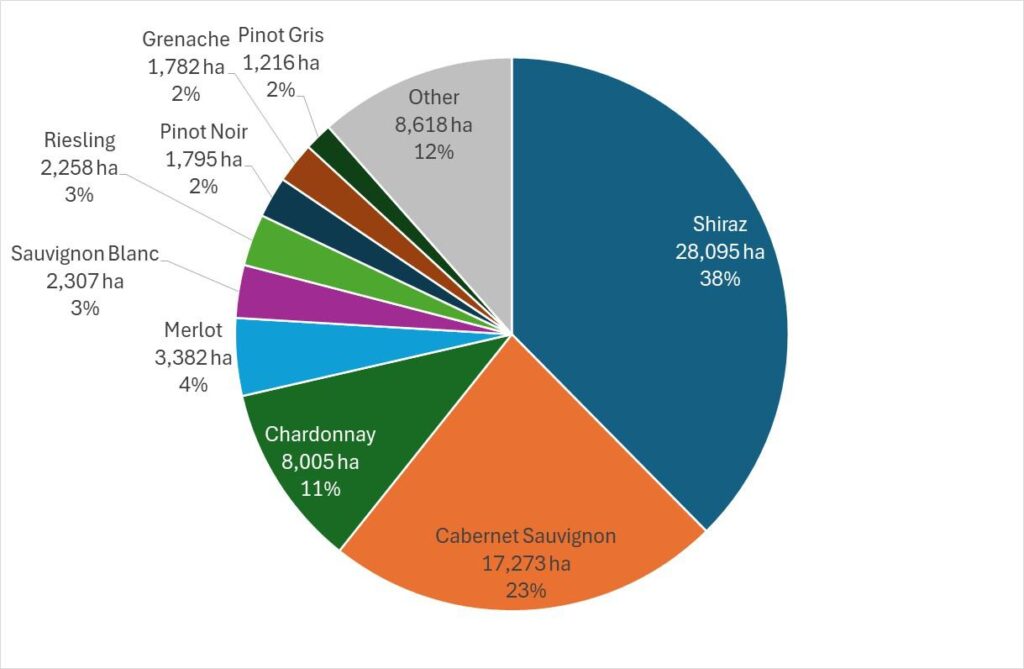
Comparing 2022-23 with 2023-24, the top five varieties from 2022-23 have all decreased in area in the past 12 months and smaller percentage varieties have mostly increased
Rootstock plantings in South Australia
71% of vines in South Australia are planted on own roots. Own rooted vines are susceptible to phylloxera.
The number of vines on own roots has remained relatively static over the past 10 years, likely due to the value placed on old vines.
Vinehealth Australia advocates that any new vine plantings be on phylloxera resistant/tolerant rootstocks to minimise the risk of damage caused by phylloxera.
Rootstocks can be beneficial for cropping level, drought tolerance, salinity tolerance and lime tolerance as well as phylloxera tolerance.
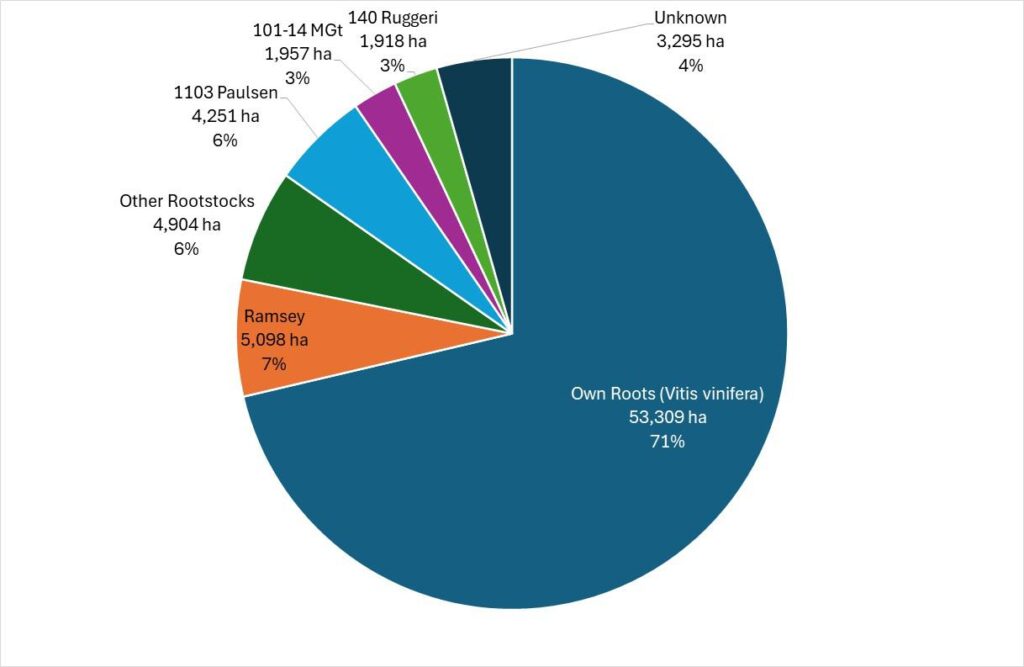
Vine age in South Australia
South Australia continues to have some of the oldest vines in the world, with known plantings going back to 1842, some six years after South Australia was first settled.
Vine age in South Australia is gradually increasing. This is in part due to less new plantings and the vines planted in the boom years of the 1990s are now creeping into the older age bracket of 35 to <70 years old.
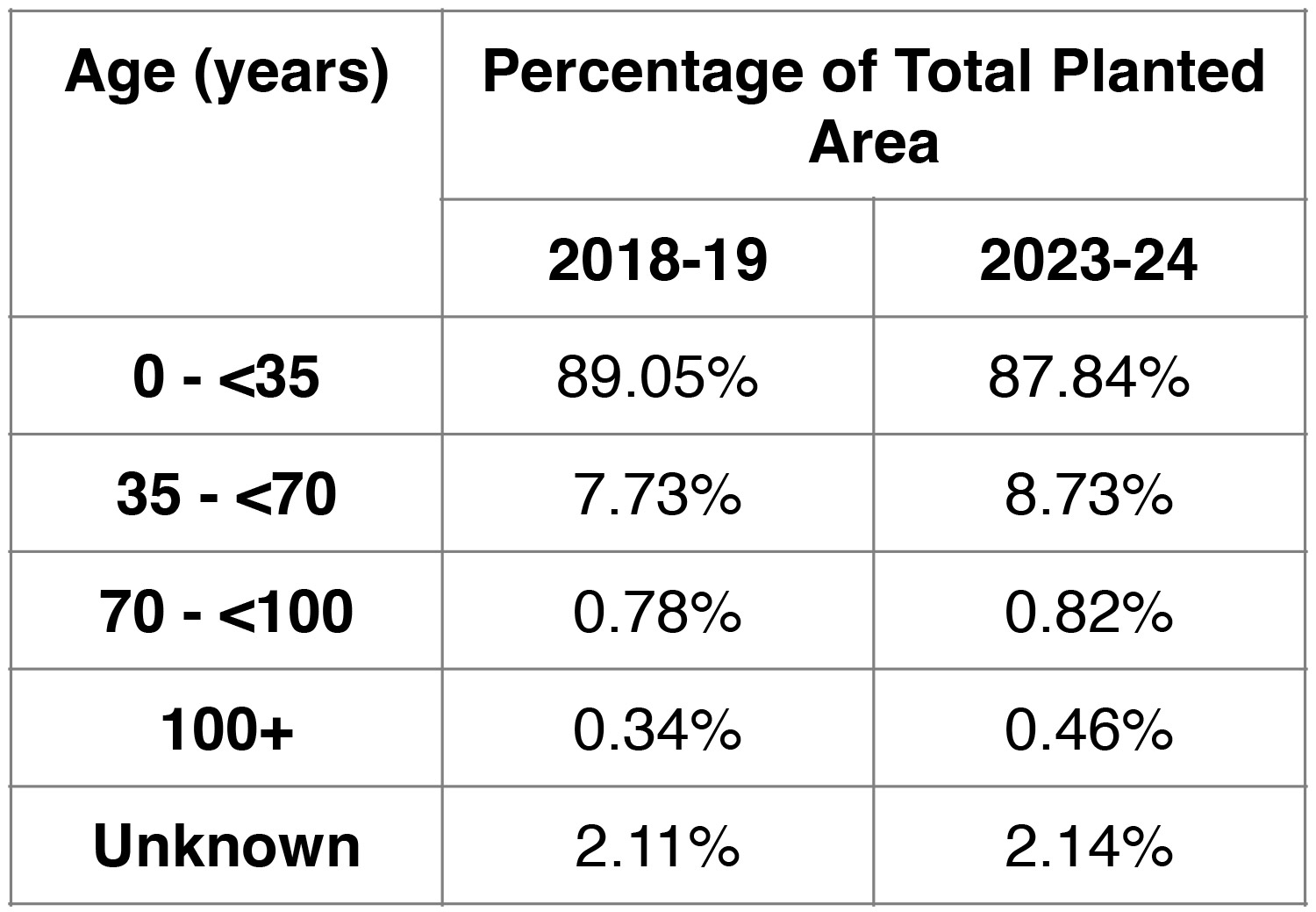
The age of vines being grubbed and removed from Vinehealth’s Vineyard Register has not been captured or reported. It could be that the majority of the grubbed vines are from 0 to <35 years old and thus appear to increase the small percentages in older age brackets.
Non-bearing vineyard area in South Australia
South Australia has seen a massive decrease in red varietal plantings in recent years, with only a small increase in white varietal plantings.
There were 144 hectares of white varieties planted in 2023 compared to 166 hectares of red varieties. This compares to 1010 hectares of red varieties and 55 hectares of white varieties in 2020.
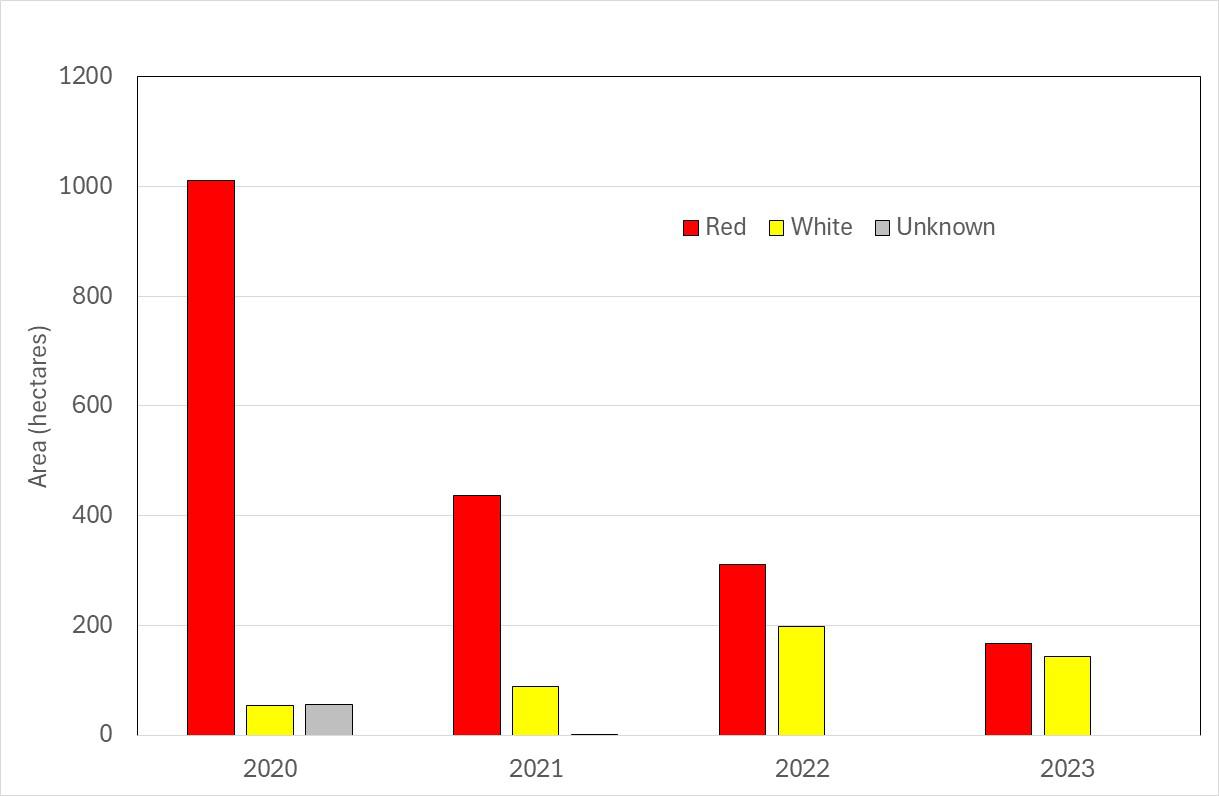
The data for this page was sourced from Vinehealth Australia’s Vineyard Register, collected via the Phylloxera and Grape Industry Act 1995 under which Vinehealth Australia derives its functions and activities. The Register contains planting details of each vineyard of 0.5 hectares or greater in South Australia.